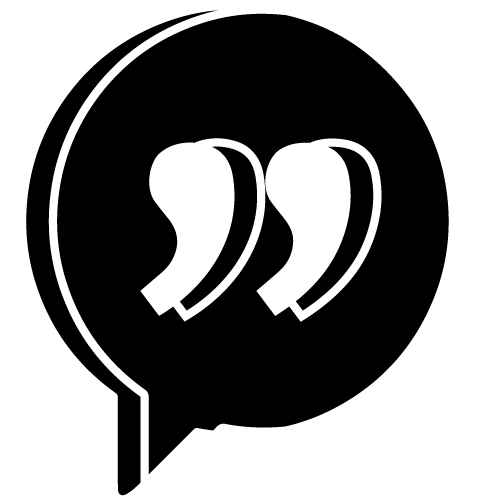Charting Cultural Fluency: Leveraging Digital Story Maps for Language Proficiency in ESP Education
DOI:
https://doi.org/10.7203/realia.33.27589Paraules clau:
Mapping, Story telling, Semiotics, Language Acquisition, Culture Awareness Resum
Resum
Cultural cartography as a way to understand the relationship between cultural manifestations and maps involves visual, symbolic and cognitive mechanisms of inquiry referring to the interpretation of territorial landscapes. The introduction of geo-computation techniques has enabled users to approach map-like visualizations of the world under different parameters. The design and interpretation of map symbology is crucial which according to Peirce (1994) is activated by forming a relationship between three distinct elements: signs, interpretants and objects. In this light, the study aims to explore the usage of digital story maps to enhance students’ cultural and linguistic acquisition in a course of English for engineers in higher education.
To cover the objective, the methodology comprises a two-phased didactic approach developed as a final course project within the English for Specific Purposes (ESP) classroom. Divided into two groups, the instruction starts for the experimental and the control groups with a set of learning sessions analysing the theoretical framework underlying the semiotic process of map making and symbol interpretation. The second step for the experimental group involves the analysis and production of digital cartographic storytelling created by learners through collaborative team work, while the control group continues to analyse and then presents their conclusions about pre-existing maps to the rest of the class. The study demonstrates that the introduction of map-creation using a web-based mapping platform provided students with the ability to create geocoded narratives through visual representations, enhanced critical and spatial thinking and fostered the development of cultural and communication skills in a foreign language
 Descàrregues
Descàrregues
 Referències
Referències
Authors, 2019.
Authors, 2021.
Atta-Alla, M. (2012). Integrating language skills through storytelling. English Language Teaching 5(12), 1-13.
Barrett, H., (2006). Researching and evaluating digital storytelling as a deep learning tool. Technology and Teacher Education Annual, 1, 647-672.
Bellone, T., Dante, V., Mandelli, A. & Mussio, L. (2020). An example of syntactic and semantic ties among images, texts and maps. Applied Geomat 12 (Suppl 1), 85–96. https://doi.org/10.1007/s12518-019-00294-3
Caquard, S. & Cartwright, W. (2014). Narrative cartography: From mapping stories to the narrative of maps and mapping. The Cartographic Journal, 51(2), 101-106, DOI: 10.1179/0008704114Z.000000000130
Cary, S. (1998). The effectiveness of a contextualized storytelling approach for second language acquisition. (Unpublished doctoral dissertation). University
of San Francisco, California.
Cosgrove, D. (2008). Cultural Cartography: Maps and Mapping in Cultural Geography. Annales de géographie, 660-661, 159-178. https://doi.org/10.3917/ag.660.0159
Chien, C. W. (2012). Use of Graphic Organizers in a Language Teachers' Professional Development. English Language Teaching, 5(10), 49-57.
ChanLin, L.J. (2008). Technology integration applied to project-based learning in science. Innovations in Education and Teaching International, 45(1), 55 – 65
Dodge, M., Kitchin, R., & Perkins, C. (2011). The Map Reader: Theories of Mapping Practice and Cartographic Representation. Wiley-Blackwell. http://dx.doi.org/10.1002/9780470979587
Giannakou, O., & Klonari, A. I. (2019). Digital Storytelling In Education Using WebGIS. European Journal of Geography, 10(3), 154-172.
Hlatywayo, J. & Manik, S. (2022). Teaching Geographic Information Systems (GIS) in South African High Schools in the Frances Baard District. Universal Journal of Educational Research, 10(5), 334 - 348.DOI: 10.13189/ujer.2022.100503.
Jones, A.,Blake, C., Davies, C., & Scanlon, E. ; (2004). Digital maps for learning: a review and prospects. Computers and Education, 43(1-2), 91–107.
Kılıçkaya, F. (2020) Learners’ perceptions of collaborative digital graphic writing based on semantic mapping. Computer Assisted Language Learning, 33(1-2), 58-84, DOI: 10.1080/09588221.2018.1544912
Kim, M. (2010). The effects of storytelling on adult English language learners.
Linguistic Research, 27(3), 447-473.
Kulvicki, J. (2015). Maps, pictures, and predication. Ergo,2.
Leshchenko, M., Ruban, L., & Tymchuk, L. (2017). Digital storytelling in a foreign language classroom of higher educational establishments. In 13th International Conference on ICT in Education, Research and Industrial Applications. Integration, Harmonization and Knowledge Transfer (pp. 428–439). Retrieved from http://ceur-ws.org/Vol-1844/10000428.pdf
Moradi, H. & Chen, H. (2019). Digital Storytelling in Language Education. Behavioral Sciences, 9(12), 147. MDPI AG. Retrieved from http://dx.doi.org/10.3390/bs9120147
Mohr, J., Bail, C., Frye, M., Lena, J., Lizardo, O., McDonnell, T., Mische, A., Tavory, I.,
& Wherry, F. (2020). Measuring Culture. Columbia University Press.
Nöth, W. (2014). The semiotics of learning new words. Journal of Philosophy of Education 48(3).
Oskoz, A., & Elola, I. (2016). Digital stories: Bringing multimodal texts to the Spanish writing classroom. ReCALL, 28(3), 326–342.
Oskoz, A., & Elola, I. (2016). Digital stories in L2 education: Overview. CALICO Journal,
33(2), 157–173.
Peirce, C. S. (1994), Peirce on Signs: Writings on Semiotics, James Hoopes, ed., paper, 294 pp., University of North Carolina (Chapel Hill) Press.
Perkins, C. (2008) Cultures of map use. The Cartographic Journal, 45(2), 150–158.
Pulverness, A. (1999). The fifth skill-intercultural awareness and language learning. British Studies Now: Anthology Issues, 2, 6-10.
Reinders, H. (2011). Digital storytelling in the language classroom. ELTWO Journal, 3.
Reyes Torres, A., Pich Ponce, E. & García Pastor, M.D. (2012). Digital storytelling as a pedagogical tool within a didactic sequence in Foreign Language Teaching. Digital Education Review, 22.
Roth, R. (2021). Cartographic design as visual storytelling: Synthesis and review of map-based narratives, genres, and tropes. The Cartographic Journal, 58(1), 83-114, DOI: 10.1080/00087041.2019.1633103
Spillman, L. (2020). What is Cultural Sociology? John Wiley & Sons.
Wajnryb, R. (2003). Stories: Narrative Activities in the Language Classroom. Cambridge Handbooks for Language Teachers. Cambridge University Press.
Zhao, F., Du, Q., & Zeng, X. (2011). Syntax-based construction theory for symbols in web thematic maps. 2011 19th International Conference on Geoinformatics, 1-5.
Descàrregues
Publicades
Com citar
-
Resum81
-
PDF 45
-
HTML 10
-
EPUB 6
Número
Secció
Llicència

Aquesta obra està sota una llicència internacional Creative Commons Reconeixement-SenseObraDerivada 4.0.
Els articles publicats en aquesta revista estan subjectes als termes següents:
1. La Universitat de València és l’editora de Research in Education and Learning Innovation Archives. La revista conserva els drets patrimonials (copyright) del que es publica en la revista, si bé permet i propicia la reutilització d’aquests escrits sota una llicència copyleft.
2. Els textos publicats en aquesta revista estan –si no s’indica el contrari– sota una llicencia Reconeixement-NoComercial-CompartirIgual 4.0 Internacional (CC BY-NC-SA 4.0).
La revista anima els seus autors a difondre i donar major visibilitat a les recerques que publique en Research in Education and Learning Innovation Archives, de manera que els informa que en publicar amb nosaltres:
- L’autor conserva els drets d’autor encara que cedeix a la revista el dret de la primera publicació.
- El treball es publica amb una llicencia Reconeixement-NoComercial-CompartirIgual 4.0 Internacional (CC BY-NC-SA 4.0).
- Autoarxiu: s’autoritza i recomana als autors difondre el seu treball en Internet en repositoris institucionals i altres pàgines personals o institucionals, per afavorir la seua visibilitat i citació, sempre indicant clarament que el treball es va publicar per primera vegada en aquesta revista.


